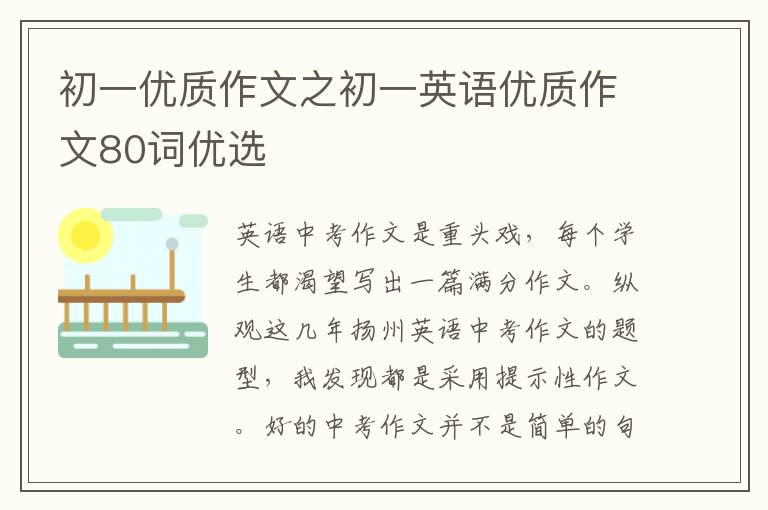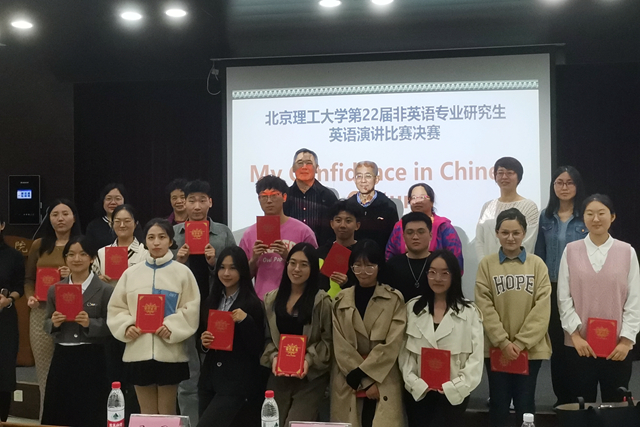大學英語四級閱讀模擬題(十四)

Precipitation
The dictionary defines the word precipitation as a falling down , and when the meteorologist uses this word with regard to the weather he is speaking of the rain, snow, sleet, and hail which fall down to earth from the atmosphere. All of these examples of precipitation have something in common. In every case what falls to the earth is water in one form or another.
Evaporation. In order to understand why precipitation occurs and to appreciate some of the similarities and differences in the various types of precipitation, we must first find out how water gets into the atmosphere. This will also help us to understand some of the other weather elements like dew and frost, and clouds and fog.
Of course you have seen water disappear from a wet street or from the surface of a fish tank. We call this disappearance evaporation. Why does water evaporate and where does the water go?
Scientists know that water, like all other substances in the universe, is composed of countless billions of tiny particles known as molecules. The molecules of water are so small they cannot be seen with even the most powerful electron microscopes ever devised. There is ample proof of their existence, however, and we also know that these molecules are constantly darting about and colliding.
Now, consider the water in an aquarium. Throughout the tank, water molecules are speeding about and bumping into each other, The constant collisions prevent the tiny particles from getting very far. At the surface of the tank, however, many molecules can escape freely into the air. This is the process of evaporation and it is through this process that water is constantly entering the atmosphere. The molecules of water are, of course, too small to be seen, and so we speak of trie water in the air as an invisible vapor. When the temperature increases, the speed at which the molecules move also increases. Faster-moving molecules escape more rapidly and evaporation is speeded up when it is warm.
The suns rays, heating down on the oceans, lakes, and rivers of the earth, cause the surface water to evaporate and enter the surrounding atmosphere. When the amount of vapor is great, we feel uncomfortable and say that it is humid. At any particular temperature the air can hold only a certain amount of water vapor. If the air is holding a maximum amount of vapor, no more water can evaporate. The meteorologist also says that the humidity at such a time is 100%.
Condensation. Fortunately, the process of evaporation can reverse itself. Otherwise, the humidity would always be high and precipitation would never take place. The process which is the reverse of evaporation is called condensation and it occurs when the temperature falls. As it becomes cooler, water molecules begin to move more slowly. Collisions take place and molecules hang together to form tiny droplets which are no longer invisible.
Cloud Formation. The condensation process explains how clouds are formed. Warm air, laden with moisture, rises into the atmosphere. As the air rises it tends to expand and this causes the temperature to drop. The falling temperature slows down the speed of molecular movement, and the water molecules gather together on dust particles floating around in the atmosphere. This condensation results in the formation of billions of tiny water droplets that make up a cloud. The droplets are so small and lightweight that they are hardly affected by gravity. Slight air movements keep them floating miles above the earth.
Sometimes a pass of moist air close to the earths surface may cool off rather suddenly. This may happen when a body of cold air moves in or when the moist air drifts over a cooler body of water. When this occurs, condensation takes place, but the cloud which forms is right on the surface of the earth rather than high in the atmosphere. Such a low-hanging cloud is called a fog. In composition the fog is exactly the same as a cloud. The only difference between the two is the place in which each occurs. The cloud is high, the fog forms on the ground.
In certain areas of the world, such as Newfoundland and the city of London, fogs occurs frequently. This is because local conditions being about sudden cooling of moisture-laden masses of air rather often.
Dew and Frost. As the sun warms the earth during the day, evaporation continues to take place. At night, however, the earth cools down as it gives off some of the heat it has received from the sun.
Grass loses its heat especially fast. The air which surrounds the grass is full of water vapor. As the moving water molecules strike the cool blades, they slow down and condensation takes place. Thus, millions of molecules come together on the grass to form the tiny water droplets we call dew. Can you understand why dew forms readily on cool, clear nights? The next time you have an ice cream soda you can watch the process of dew formation. As the cold ice cream lowers the temperature to the glass, water vapor in the surrounding atmosphere condenses on the surface and the glass seems to sweat . This is artificial dew, perhaps, but is from exactly the same reason that dew forms in nature.
The freezing point of water is 32 degrees Fahrenheit. If the temperature should be below freezing when condensation takes place on the grass or on the ground, dew will not form. Instead of growing into dewdrops, the water molecules become tiny crystals of ice. A mass of ice crystals that form in this way is known as frost. It is important to remember that frost is not dew which has frozen. The frost particles form directly from the molecular state when the temperature is sub-freezing. Dew formation and frost formation are essentially the same. The only difference between them is the temperature at which each takes place.
Rain and Snow. You will remember that the particles which make up a cloud are very tiny. In fact, the water droplets are so small they float about without falling to the ground. At times, however, these water particles tend to get larger. This may happen when several droplets join with others over and over again. Or, growth may occur if the process of condensation continues to take place. In either event, the original droplet may grow a million times its size into a full sized drip. Of course, the air can no longer keep such large drips afloat and precipitation takes place in the form of rain.
1. Precipitation can be controlled to transform deserts into productive lands.
2. Rain, snow, sleet and hail are different forms of precipitation.
3. The passage is mainly about precipitation processes and forms of precipitation.
4. Evaporation is the process of water molecules escapes from the surface of lakes, oceans, rivers or tanks and getting into the atmosphere.
5. A fog is a mass of moist air falling to the earth.
6. Dew is different from frost in that the former takes place on the cool blades.
7. Rain forms when clouds become thick and moist enough.
8. The maximum amount of vapor in the air is known as______.
9. Water droplets in the air are too small and light to be affected by______and therefore
they are afloat miles above the earth.
10. A cloud is identical to a fog in______.
I. NG 2. Y 3. Y 4. Y 5. N 6. N 7. N 8. moisture saturation 9. gravity 10. composition
Precipitation
The dictionary defines the word precipitation as a falling down , and when the meteorologist uses this word with regard to the weather he is speaking of the rain, snow, sleet, and hail which fall down to earth from the atmosphere. All of these examples of precipitation have something in common. In every case what falls to the earth is water in one form or another.
Evaporation. In order to understand why precipitation occurs and to appreciate some of the similarities and differences in the various types of precipitation, we must first find out how water gets into the atmosphere. This will also help us to understand some of the other weather elements like dew and frost, and clouds and fog.
Of course you have seen water disappear from a wet street or from the surface of a fish tank. We call this disappearance evaporation. Why does water evaporate and where does the water go?
Scientists know that water, like all other substances in the universe, is composed of countless billions of tiny particles known as molecules. The molecules of water are so small they cannot be seen with even the most powerful electron microscopes ever devised. There is ample proof of their existence, however, and we also know that these molecules are constantly darting about and colliding.
Now, consider the water in an aquarium. Throughout the tank, water molecules are speeding about and bumping into each other, The constant collisions prevent the tiny particles from getting very far. At the surface of the tank, however, many molecules can escape freely into the air. This is the process of evaporation and it is through this process that water is constantly entering the atmosphere. The molecules of water are, of course, too small to be seen, and so we speak of trie water in the air as an invisible vapor. When the temperature increases, the speed at which the molecules move also increases. Faster-moving molecules escape more rapidly and evaporation is speeded up when it is warm.
The suns rays, heating down on the oceans, lakes, and rivers of the earth, cause the surface water to evaporate and enter the surrounding atmosphere. When the amount of vapor is great, we feel uncomfortable and say that it is humid. At any particular temperature the air can hold only a certain amount of water vapor. If the air is holding a maximum amount of vapor, no more water can evaporate. The meteorologist also says that the humidity at such a time is 100%.
Condensation. Fortunately, the process of evaporation can reverse itself. Otherwise, the humidity would always be high and precipitation would never take place. The process which is the reverse of evaporation is called condensation and it occurs when the temperature falls. As it becomes cooler, water molecules begin to move more slowly. Collisions take place and molecules hang together to form tiny droplets which are no longer invisible.
Cloud Formation. The condensation process explains how clouds are formed. Warm air, laden with moisture, rises into the atmosphere. As the air rises it tends to expand and this causes the temperature to drop. The falling temperature slows down the speed of molecular movement, and the water molecules gather together on dust particles floating around in the atmosphere. This condensation results in the formation of billions of tiny water droplets that make up a cloud. The droplets are so small and lightweight that they are hardly affected by gravity. Slight air movements keep them floating miles above the earth.
Sometimes a pass of moist air close to the earths surface may cool off rather suddenly. This may happen when a body of cold air moves in or when the moist air drifts over a cooler body of water. When this occurs, condensation takes place, but the cloud which forms is right on the surface of the earth rather than high in the atmosphere. Such a low-hanging cloud is called a fog. In composition the fog is exactly the same as a cloud. The only difference between the two is the place in which each occurs. The cloud is high, the fog forms on the ground.
In certain areas of the world, such as Newfoundland and the city of London, fogs occurs frequently. This is because local conditions being about sudden cooling of moisture-laden masses of air rather often.
Dew and Frost. As the sun warms the earth during the day, evaporation continues to take place. At night, however, the earth cools down as it gives off some of the heat it has received from the sun.
Grass loses its heat especially fast. The air which surrounds the grass is full of water vapor. As the moving water molecules strike the cool blades, they slow down and condensation takes place. Thus, millions of molecules come together on the grass to form the tiny water droplets we call dew. Can you understand why dew forms readily on cool, clear nights? The next time you have an ice cream soda you can watch the process of dew formation. As the cold ice cream lowers the temperature to the glass, water vapor in the surrounding atmosphere condenses on the surface and the glass seems to sweat . This is artificial dew, perhaps, but is from exactly the same reason that dew forms in nature.
The freezing point of water is 32 degrees Fahrenheit. If the temperature should be below freezing when condensation takes place on the grass or on the ground, dew will not form. Instead of growing into dewdrops, the water molecules become tiny crystals of ice. A mass of ice crystals that form in this way is known as frost. It is important to remember that frost is not dew which has frozen. The frost particles form directly from the molecular state when the temperature is sub-freezing. Dew formation and frost formation are essentially the same. The only difference between them is the temperature at which each takes place.
Rain and Snow. You will remember that the particles which make up a cloud are very tiny. In fact, the water droplets are so small they float about without falling to the ground. At times, however, these water particles tend to get larger. This may happen when several droplets join with others over and over again. Or, growth may occur if the process of condensation continues to take place. In either event, the original droplet may grow a million times its size into a full sized drip. Of course, the air can no longer keep such large drips afloat and precipitation takes place in the form of rain.
1. Precipitation can be controlled to transform deserts into productive lands.
2. Rain, snow, sleet and hail are different forms of precipitation.
3. The passage is mainly about precipitation processes and forms of precipitation.
4. Evaporation is the process of water molecules escapes from the surface of lakes, oceans, rivers or tanks and getting into the atmosphere.
5. A fog is a mass of moist air falling to the earth.
6. Dew is different from frost in that the former takes place on the cool blades.
7. Rain forms when clouds become thick and moist enough.
8. The maximum amount of vapor in the air is known as______.
9. Water droplets in the air are too small and light to be affected by______and therefore
they are afloat miles above the earth.
10. A cloud is identical to a fog in______.
I. NG 2. Y 3. Y 4. Y 5. N 6. N 7. N 8. moisture saturation 9. gravity 10. composition









